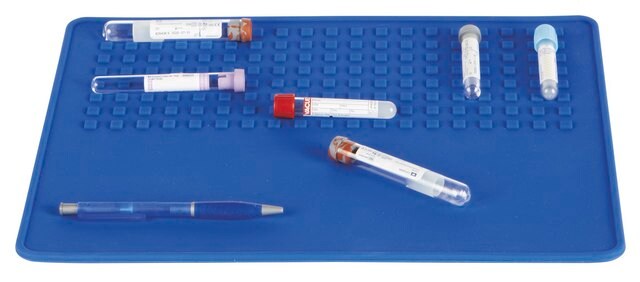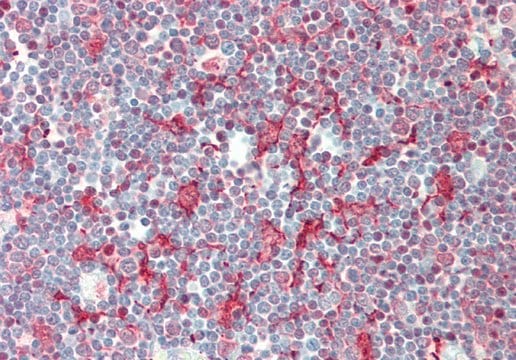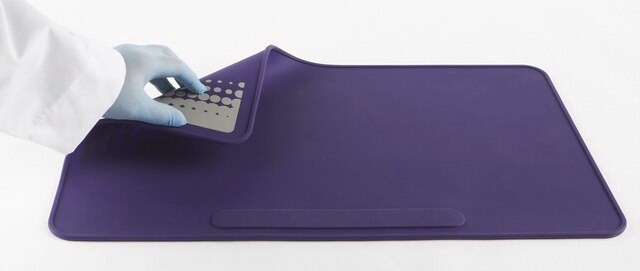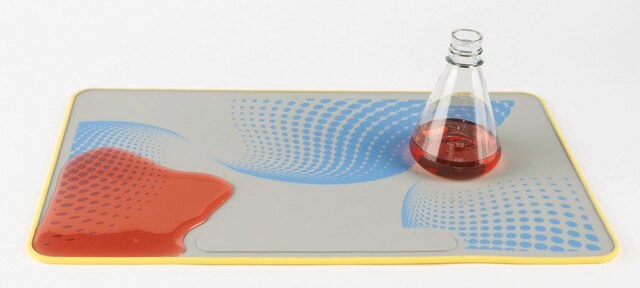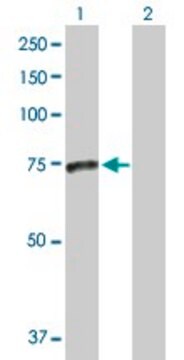General description
Sphingomyelin phosphodiesterase 3 (UniProt: Q9NY59; also known as EC: 3.1.4.12, Neutral sphingomyelinase 2, nSMase-2, nSMase2, Neutral sphingomyelinase II) is encoded by the SMPD3 gene (Gene ID: 55512) in human. SMases are classified based on their pH optimum into acid, neutral, and alkaline subtypes. Four different neutral SMases have been described in mammals and nSMase-2 is shown to be the most predominant in cellular systems. nSMase-2 is a phosphoprotein whose activity is regulated by calcineurin (PP2B) and it is shown to be exclusively phosphorylated on serine residues. It is predominantly expressed in the brain and its levels are shown to be up-regulated during G0/G1 phases. Two isoforms of nSMase-2 are reported that are produced by alternative splicing. nSMase-2 catalyzes the generation of bioactive lipid ceramide through the hydrolysis of the membrane lipid sphingomyelin and specifically hydrolyzes the phosphocholine-headgroup from sphingomyelin. It does not exhibit phospholipase C-type activity against phosphatidylcholine, lysophosphatidylcholine, platelet activating factor or lyso-platelet activating factor. For its activity a neutral pH and divalent cations (Mg2+ or Mn2+) are required and its activity is stimulated by the presence of phosphatidylserine (PS) and unsaturated fatty acids. NSMase-2 undergoes palmitoylation and palmitoylation-deficient protein is target for lysosomal degradation. (Ref.: Filosto, S., et al (2010). J. Biol. Chem. 285 (14); 10213-10222; Shamseddine, A.A., et al (2013). Adv. Enz. Regul. 57: 24-41).
Specificity
Clone 14G5.1 detects neutral sphingomyelinase 2 in human and murine brain tissue. It targets an epitope within 101 amino acids from the C-terminal region.
Immunogen
GST/His-tagged recombinant fragment corresponding to 101 amino acids from the C-terminal region of human Neutral sphingomyelinase 2.
Application
Anti-SPMD3 (nSMase2), clone 14G5.1, Cat. No. MABC1558, is a mouse monoclonal antibody that detects Sphingomyelin phosphodiesterase 3 (sSMase) and has been tested for use in Immunohistochemistry (Paraffin) and Western Blotting.
Research Category
Apoptosis & Cancer
Western Blotting Analysis: A 1:1,000 dilution from a representative lot detected SPMD3 (nSMase2) in human brain tissue lysate.
Immunohistochemistry Analysis: A 1:50 dilution from a representative lot detected SPMD3 (nSMase2) in human stomach and human fallopian tube tissue sections.
Quality
Evaluated by Western Blotting in mouse cerebellum tissue lysate.
Western Blotting Analysis: A 1:1,000 dilution of this antibody detected SPMD3 (nSMase2) in mouse cerebellum tissue lysate.
Target description
~70 kDa observed; 71.08 kDa calculated. Uncharacterized bands may be observed in some lysate(s).
Physical form
Format: Unpurified
Mouse monoclonal antibody in tissue culture supernatant without azide.
Unpurified
Storage and Stability
Stable for 1 year at -20°C from date of receipt. Handling Recommendations: Upon receipt and prior to removing the cap, centrifuge the vial and gently mix the solution. Aliquot into microcentrifuge tubes and store at -20°C. Avoid repeated freeze/thaw cycles, which may damage IgG and affect product performance.
Other Notes
Concentration: Please refer to lot specific datasheet.
Disclaimer
Unless otherwise stated in our catalog or other company documentation accompanying the product(s), our products are intended for research use only and are not to be used for any other purpose, which includes but is not limited to, unauthorized commercial uses, in vitro diagnostic uses, ex vivo or in vivo therapeutic uses or any type of consumption or application to humans or animals.
